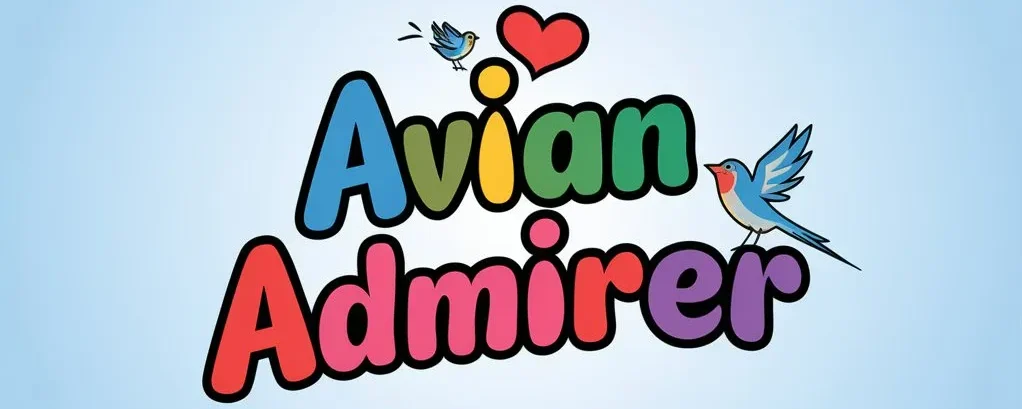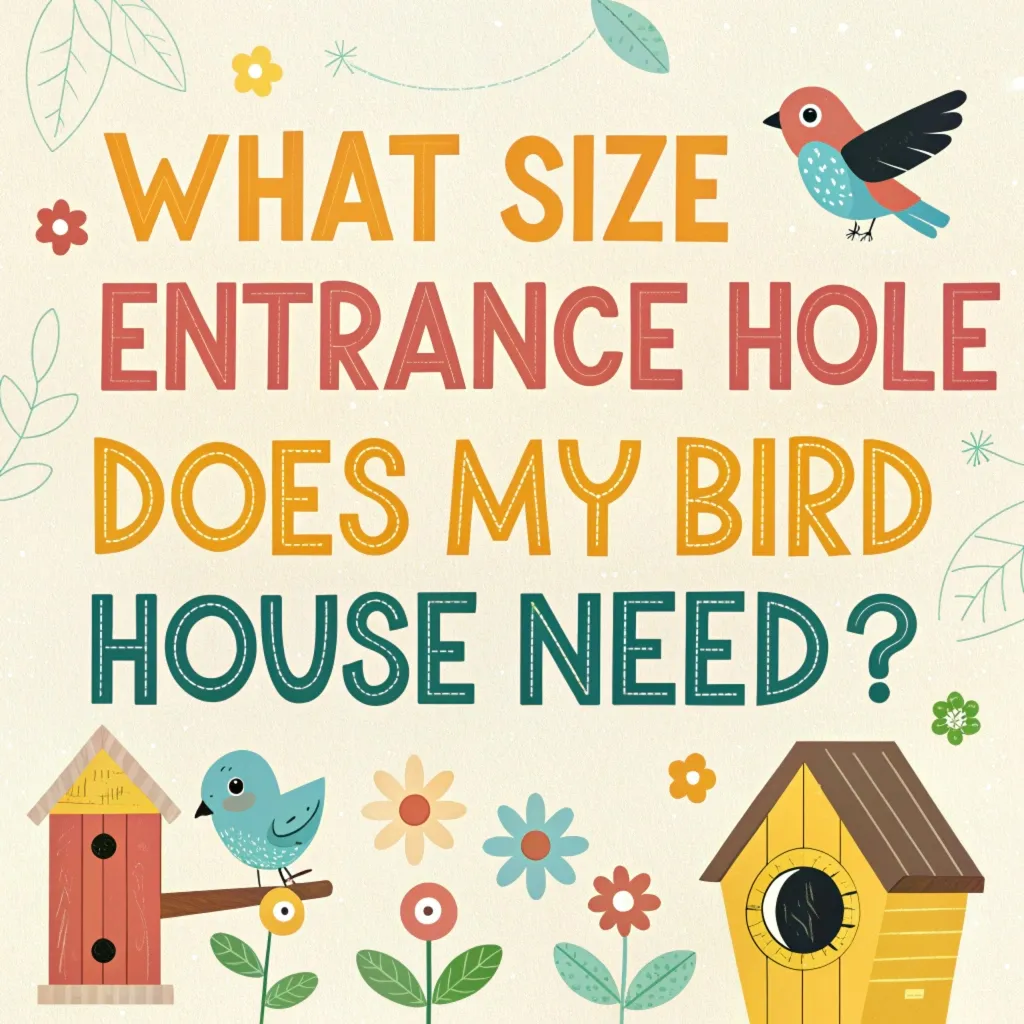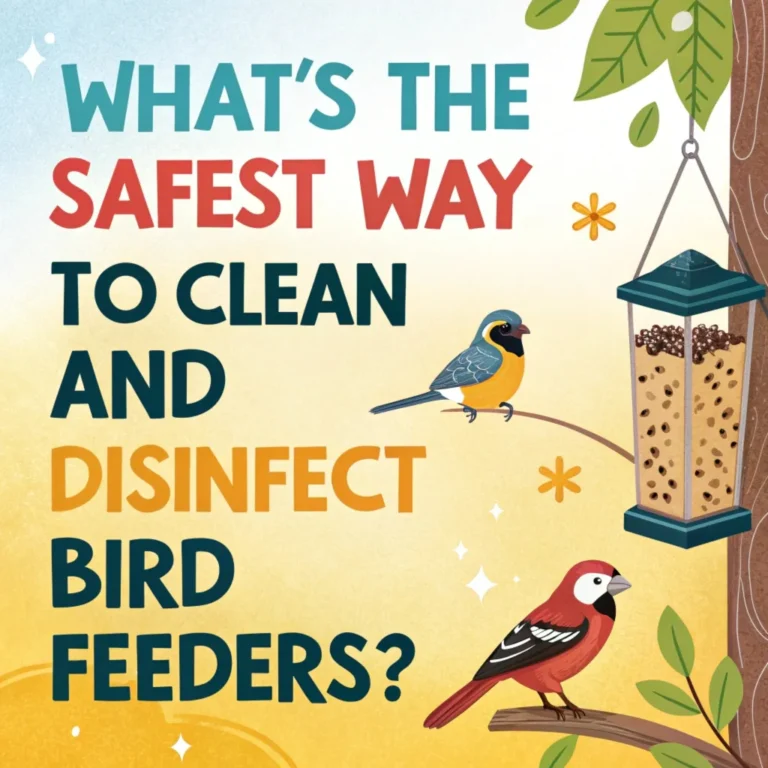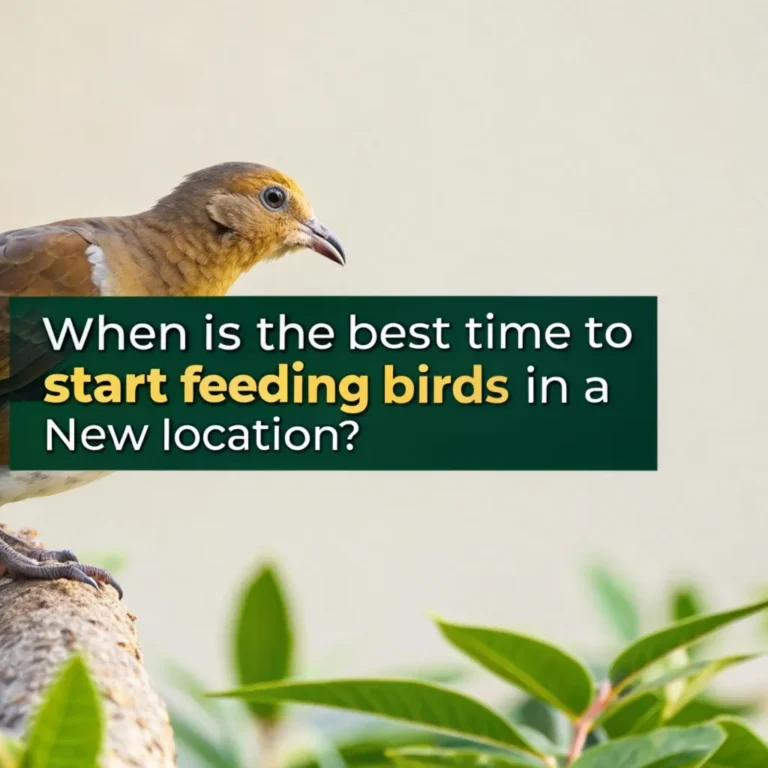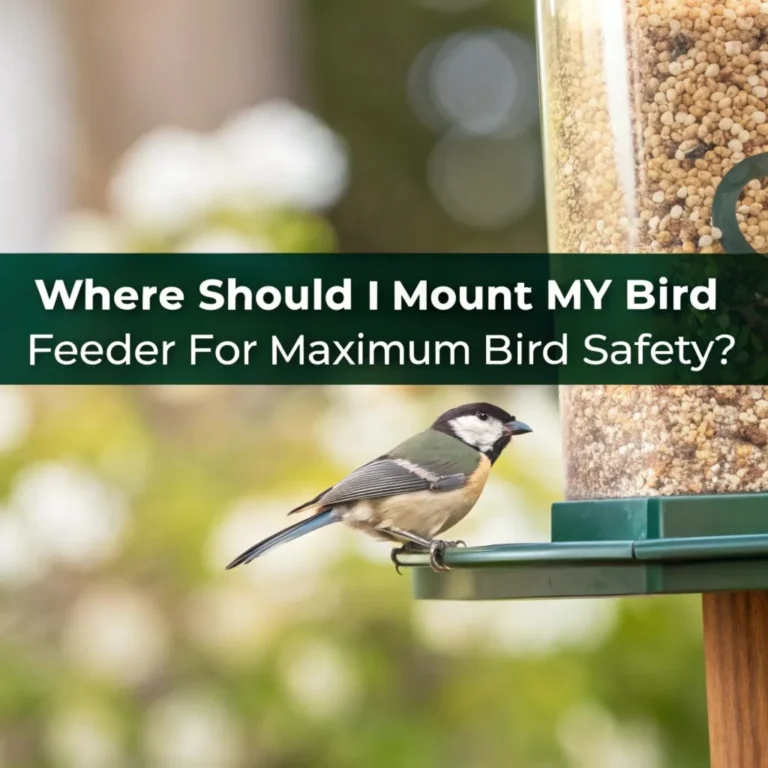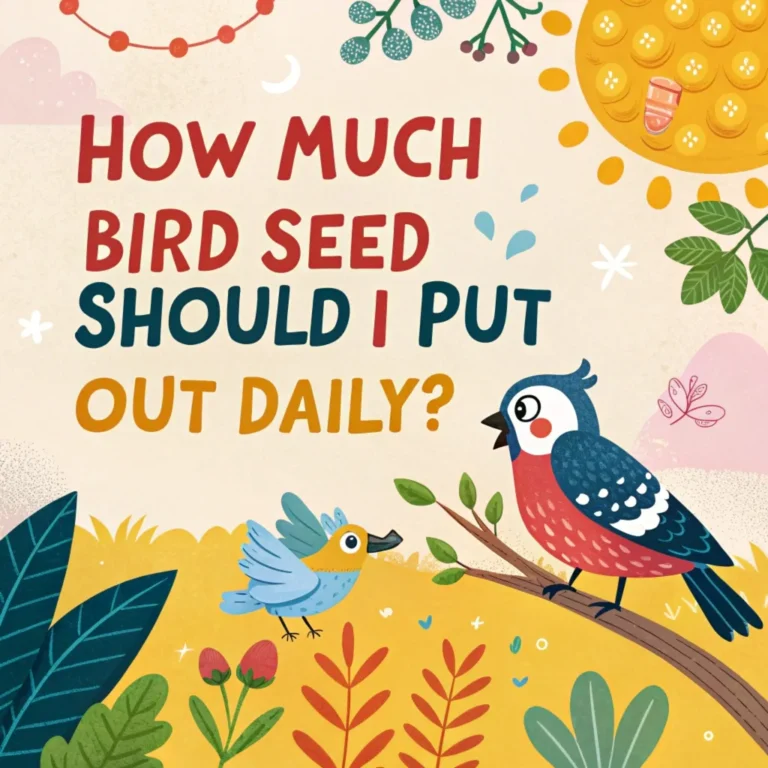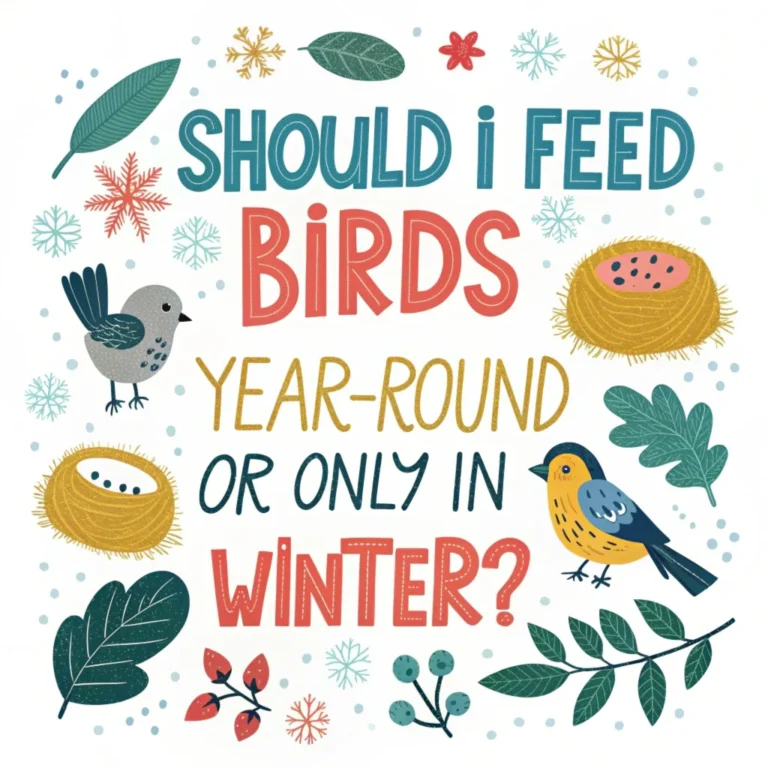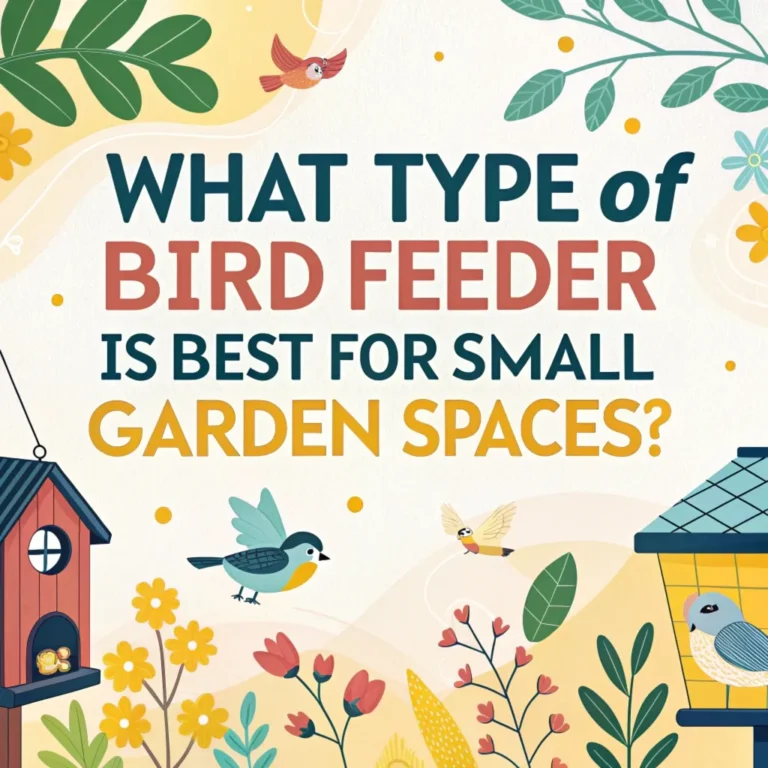What Size Entrance Hole Does My Bird House Need?
Bird houses are special homes we make for birds. They help birds find a safe place to build nests and raise their babies. But did you know that the size of the hole in a bird house is very important?
It’s like choosing the right door for your home. Some birds need small holes, while others need bigger ones. Getting this size right helps the right birds move in and keeps other animals out.
In this guide, we’ll learn about the perfect hole sizes for different kinds of birds. This information will help you make or choose the best bird house for the birds in your area.
Let’s explore how a simple thing like a hole size can make a big difference in helping our feathered friends!
Key Takeaways
- Hole size determines occupancy: The entrance hole diameter is the most important feature of a bird house, determining which species will use it.
- Safety considerations: Proper hole size protects birds from predators and unwanted competitors.
- Species-specific requirements: Different bird species need different hole sizes, ranging from 1 inch to 3 inches or more.
- No perches needed: Avoid adding perches, as they can help predators access the nest.
- Precise measurements matter: Even small variations in hole size can make a big difference in attracting desired species.
- Predator protection: Correct hole size helps keep out larger birds and mammals that might harm nesting birds.
- Ventilation is important: Include small ventilation holes near the top of the bird house for air circulation.
- Drainage is essential: Drill small holes in the bottom of the house to allow water to escape.
- Material matters: Wood is the best material for bird houses, providing proper insulation.
- Placement considerations: Mount bird houses securely and at the appropriate height for target species.
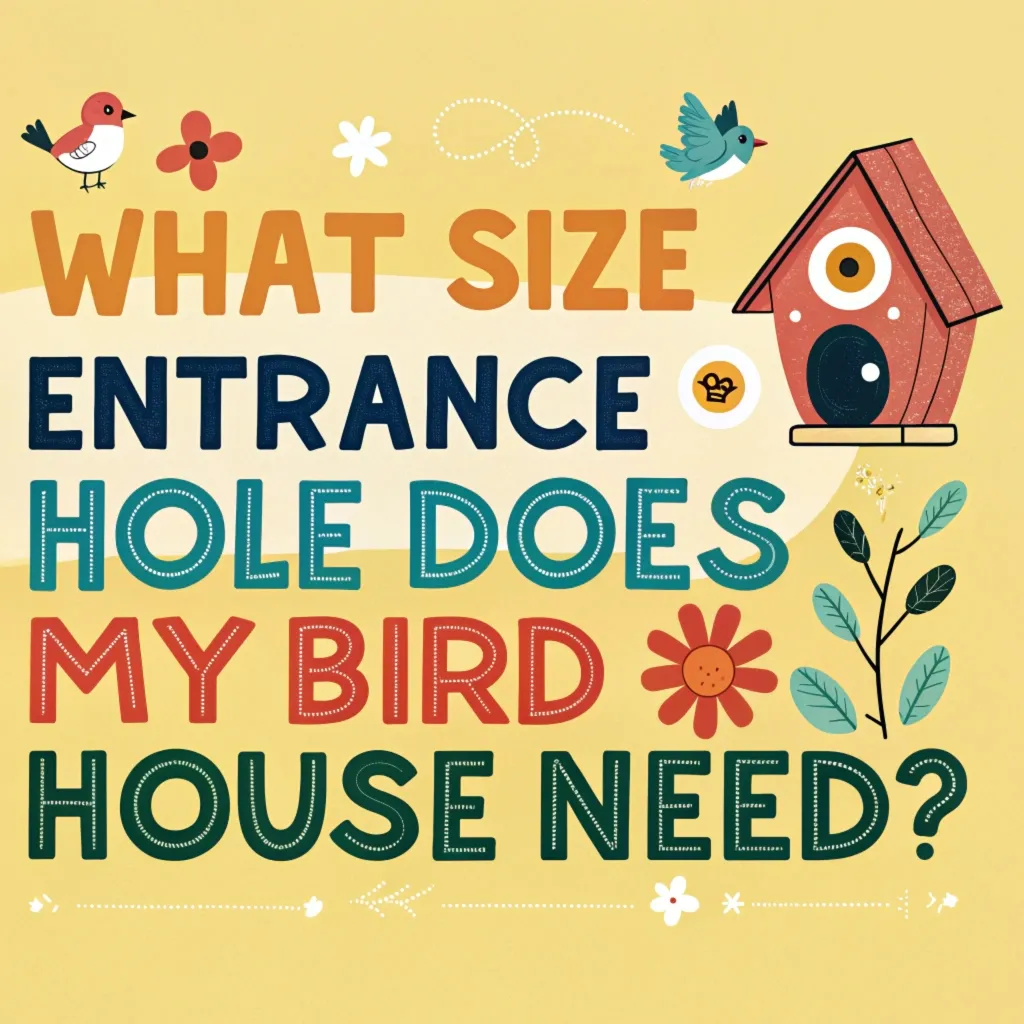
Understanding Bird House Hole Sizes
The entrance hole size of a bird house is very important. It decides which birds can go inside and keeps them safe from danger.
A big hole might let in unwanted animals, while a small hole might keep out the birds you want to help. The right size hole makes sure the birds are comfortable and protected while they nest.
Common Bird Species and Their Ideal Hole Sizes
When you make a bird house, you need to know which birds you want to attract. Different birds like different size holes.
Some birds are small and need tiny holes, while others are bigger and need larger openings. Let’s look at some common birds and the hole sizes they prefer for their homes.
Bluebirds
Bluebirds need a hole that is 1.5 inches wide. This size works well for both Eastern and Western Bluebirds. The hole is just right for them to get in and out easily, but it keeps bigger birds away.
Chickadees and Nuthatches
These little birds like a smaller hole. They need one that is 1.25 inches wide. This size is perfect for them to enter but too small for bigger birds that might try to take over their home.
Wrens
House Wrens are very small birds. They can use an even smaller hole that is only 1 inch wide. This tiny opening keeps them safe from larger birds that might want to use their house.
Tree Swallows
Tree Swallows like the same size hole as bluebirds. A 1.5-inch wide opening works well for them. This size lets them fly in and out easily while keeping bigger birds out.
Woodpeckers
Woodpeckers come in different sizes, so they need different hole sizes:
- Downy Woodpeckers like a 1.25-inch hole
- Hairy Woodpeckers need a 1.5-inch hole
- Flickers, which are bigger, need a 2.5-inch hole
Purple Martins
Purple Martins are bigger birds. They need a larger hole that is 2.25 inches wide. This size lets them enter their house comfortably.
Owls
Owls are much bigger than other birds that use houses. They need very large openings:
- Screech Owls need a 3-inch wide hole
- Barn Owls need an even bigger 6-inch wide hole
Importance of Precise Measurements
Getting the hole size just right is very important. Even a small change can make a big difference. For example, a 1.5-inch hole is good for bluebirds but too big for chickadees.
A 1.25-inch hole is perfect for chickadees but too small for bluebirds. Measuring carefully helps you make a house that’s just right for the birds you want to help.
Additional Design Considerations
When you make a bird house, there are more things to think about besides the hole size. These extra details help make the house safe and comfortable for the birds. Let’s look at some important things to remember when you’re designing your bird house.
Ventilation
Birds need fresh air in their house. Make small holes near the top of the bird house. These holes should be about 1/8 to 1/4 inch wide. They let air move around inside the house, keeping the birds cool and comfortable.
Drainage
Sometimes rain might get inside the bird house. To keep the birds dry, make small holes in the bottom of the house. These holes should be about 1/4 inch wide. They let any water that gets in flow out quickly.
No Perches
Many people think birds need perches on their houses. But birds that use houses don’t need them. In fact, perches can be dangerous. They make it easier for animals that might hurt the birds to get inside. It’s best to leave perches off your bird house.
Interior Texture
The inside of the bird house should not be smooth. Make sure it’s a bit rough. This helps baby birds climb out when they’re ready to leave the nest. You can use rough wood or make small grooves inside to help them.
Materials and Construction
Choosing the right materials for your bird house is important. The best material to use is wood. Wood keeps the birds warm when it’s cold and cool when it’s hot.
Don’t use treated wood because it might have chemicals that are bad for birds. Also, don’t paint the inside of the house. Make the walls thick, about 3/4 inch, to keep the temperature nice inside.
Placement and Mounting
Where you put your bird house is very important. You need to attach it firmly to a pole, post, or tree. Different birds like their houses at different heights:
- Put bluebird houses 5-10 feet high
- Chickadee houses should be 5-15 feet high
- Woodpecker houses need to be 10-20 feet high
- Purple Martin houses should be 15-20 feet high
Make sure the entrance hole faces away from where the wind usually comes from. This protects the birds from bad weather.
Maintenance
It’s important to keep bird houses clean. Make your bird house easy to open for cleaning. You can do this by making one side or the top open like a door. Clean the house once a year, usually in late winter before birds start nesting again.
Predator Protection
The right hole size helps keep birds safe from animals that might hurt them. But you can do more to protect the birds:
- Make the roof stick out over the hole
- Put guards on poles to stop animals from climbing up
- Place the house where cats and squirrels can’t reach it
Conclusion
Picking the right hole size for your bird house is very important. It helps attract the birds you want and keeps them safe.
By following these tips and thinking about the birds in your area, you can make a great home for birds. This helps protect birds and gives them a safe place to live.
FAQs
What is the most common bird house hole size?
The most common hole size is 1.5 inches. This size works well for bluebirds and many other small to medium-sized birds that like to nest in holes.
Can I make the hole size adjustable?
While it’s possible to make a hole that changes size, it’s better to make houses with fixed hole sizes. Each house should be made for a specific type of bird.
How do I keep starlings out of my bird house?
Use a hole that is 1.5 inches wide or smaller. This keeps starlings out but lets smaller native birds get in.
Should I add nesting material to the bird house?
Most birds like to bring their own nesting material. But woodpeckers and some owls like to have some wood chips in their house.
How often should I clean out the bird house?
Clean bird houses once a year. The best time to do this is in late winter, before birds start nesting in the spring.

Ava is a bird enthusiast and nature lover who has spent countless hours observing and learning about the fascinating world of birds. With a passion for sharing her knowledge and inspiring others to appreciate the beauty of birds, Ava writes about her experiences and insights on avianadmirer.com.
